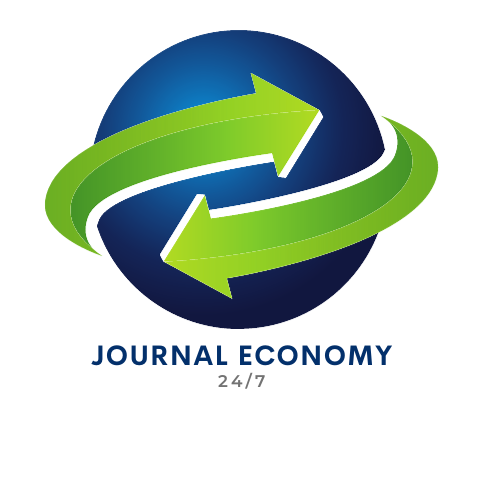
When you are in the market to purchase a home, you may come across the term “Private Mortgage Insurance” or PMI. But what exactly is PMI and why do lenders require it? In this blog post, we will delve into the basics of Private Mortgage Insurance, why it is necessary, how much it costs, and how you can avoid paying it.
Understanding the Basics of Private Mortgage Insurance
Private Mortgage Insurance (PMI) is a protective financial tool for lenders that kicks in when a homebuyer makes a down payment of less than 20% on a home purchase. This insurance is designed to shield the lender from the potential loss if the borrower is unable to repay the mortgage. It’s a common requirement for conventional loans where the down payment is on the lower side, serving as a safety net for lenders by covering a portion of the lender’s potential losses in the event of default.
- At its core, PMI is not intended to protect the borrower, although it indirectly benefits them by enabling access to mortgage loans that might otherwise be out of reach without a substantial down payment. The presence of PMI opens up the housing market to individuals who have not saved a 20% down payment but are still financially capable of owning a home and managing monthly mortgage payments.
- The requirement for PMI is determined by the loan-to-value ratio (LTV), a metric used by lenders to assess the risk of loan default. The higher the LTV, the higher the perceived risk, which is why PMI becomes mandatory under the specified down payment threshold. Despite its benefits in expanding homeownership opportunities, it’s crucial for borrowers to understand the conditions and costs associated with PMI to better manage their home financing options and overall budget for purchasing a home.
Why Lenders Require PMI
Lenders impose the requirement for Private Mortgage Insurance (PMI) as a risk management strategy. In the realm of home financing, whenever a borrower opts to make a down payment that is less than the traditionally recommended 20%, the loan is perceived as carrying a higher risk of default. This higher risk stems from the assumption that borrowers who invest less of their own money upfront might be less financially stable or committed to maintaining their mortgage payments over time. Therefore, PMI serves as a safeguard for the lender, ensuring that they have a level of protection against the possibility of a loan going unpaid.
- By mandating PMI, lenders are able to broaden the accessibility of mortgage loans to a wider array of potential homebuyers, particularly those who may be financially sound but lack the resources for a hefty down payment. This inclusivity fosters greater opportunities for homeownership among individuals and families who might otherwise be sidelined in the housing market due to stringent down payment requirements.
- Despite its role in facilitating access to loans, the primary function of PMI remains to protect the lender’s investment. It bridges the gap of financial security between what the borrower can offer up front and what the lender needs to mitigate potential losses, making it a crucial element in the lending equation for low down payment mortgages.
How Much Does PMI Cost?
The price tag attached to Private Mortgage Insurance can vary significantly and is influenced by several factors, including the size of the down payment, the borrower’s credit history, and the total amount of the mortgage loan. Generally speaking, PMI premiums can range from as low as 0.3% to as high as 1.5% of the overall loan amount annually. This variance means that the cost of PMI is not a one-size-fits-all, but rather a tailored expense based on the lender’s assessment of the risk involved with the loan.
- This amount is typically rolled into your monthly mortgage payments, making it a crucial factor to consider when budgeting for your home.
- It’s also important to note that the PMI rate is subject to change based on fluctuations in the housing market and the borrower’s credit profile. High credit scores may help lower PMI costs, emphasizing the importance of maintaining a strong credit history. Understanding these costs upfront can significantly impact your budgeting process and long-term financial planning when purchasing a home.
Calculating Your PMI Payments
Calculating your PMI payments is a straightforward process that can help you gauge the additional monthly costs associated with your mortgage. To start, you’ll need to know the total loan amount you’re borrowing and the PMI rate offered by your lender, which is typically influenced by your down payment and credit score.
- This formula provides a simple way to estimate your PMI costs, which will be added to your regular mortgage payment, thus affecting your monthly budget.
- Keep in mind, the PMI rate can vary based on lender assessment and market conditions, so it’s essential to confirm the exact rate with your lender. Additionally, as you pay down your mortgage and your home’s equity increases, you might qualify for a reduction or elimination of PMI payments, which can alter your monthly expenses. Regularly reviewing your loan balance and home value can inform you when it might be time to discuss PMI removal with your lender, potentially lowering your monthly payments.
The Impact of PMI on Your Monthly Mortgage Payment
The inclusion of Private Mortgage Insurance (PMI) in your mortgage. Payment can lead to a notable uptick in your monthly financial obligations. Given its basis on the loan amount and influenced by factors such as your down payment and credit score. PMI costs can add a significant sum over and above your principal and interest payments. For many homebuyers, particularly first-timers who may not have the means to make. A large down payment, this additional cost is an essential consideration in the affordability of a home.
- When calculating your potential mortgage expenses, incorporating PMI into the budgeting process is critical. This added expense affects the overall loan affordability and could impact your decision on how much home you can realistically purchase. For instance, a higher PMI rate not only increases your monthly outlay but also could limit your buying power by reducing the price range of homes you can consider.
- Understanding the dynamics of PMI and how it fits into your monthly mortgage payment allows for more informed financial planning. By accurately assessing this cost, prospective homeowners can explore strategies to minimize or eliminate PMI, such as saving for a larger down payment or considering different loan types. Awareness of PMI’s impact is key to navigating the home buying process with confidence, ensuring you are prepared for the total monthly payment you’ll commit to, not just the mortgage principal and interest.

How to Avoid Paying PMI
Avoiding Private Mortgage Insurance (PMI) can lead to substantial savings over the life of your mortgage. To sidestep this additional expense, consider accumulating a down payment of 20% or more. This upfront investment significantly lowers the loan-to-value ratio, diminishing the lender’s risk and negating the need for PMI.
- For those unable to meet the 20% threshold, investigating government-backed. Loan programs that do not require PMI is another viable pathway. Programs such as VA loans, available to veterans and their families, and USDA loans, designed for buyers in rural. And suburban areas, offer financing solutions without the necessity of PMI. Both programs have specific eligibility requirements but can provide an avenue to homeownership without the added cost of mortgage insurance.
- Another strategy involves lender-paid mortgage insurance (LPMI). With LPMI, the cost of insurance is incorporated into a slightly higher interest. Rate on your loan, rather than a separate PMI payment. This option can result in lower monthly payments initially. Though it’s important to calculate the long-term costs compared to traditional PMI.
- Exploring these alternatives can help prospective homeowners manage their budgets more effectively. And possibly qualify for a mortgage that fits their financial situation without the added burden of PMI.
Getting Rid of PMI on Your Mortgage
Eliminating Private Mortgage Insurance from your mortgage payment is a financially savvy step. That homeowners can take once they’ve reached a certain threshold of equity in their home. To initiate the removal of PMI, the first step is to get. In touch with your mortgage lender to express your desire for its cancellation. It’s important to be aware that the process for PMI removal might vary from one lender to another. Necessitating a clear understanding of your lender’s specific procedures and requirements.
Typically, lenders require proof of the home’s current value to ensure that the mortgage. Balance is indeed less than 80% of the home’s value, thus meeting the equity threshold. This often involves obtaining an appraisal by a professional to confirm the home’s market value. Has not decreased and that your equity has increased accordingly. Additionally, maintaining a good payment history is crucial as lenders will review. Your mortgage payment record to ensure that payments have been timely, with no defaults.
Once you have officially met your lender’s criteria for PMI removal, submit a written request for the cancellation. Keep diligent records of all communications and provide the necessary documentation as requested by your lender. Successfully navigating this process can lead to significant savings, reducing your monthly mortgage payment by eliminating the PMI component.
Alternatives to Private Mortgage Insurance
For those looking to circumvent the costs associated with PMI, considering alternatives can provide viable solutions. A notable strategy is the utilization of a piggyback loan, also known as an 80/10/10 loan. This approach involves taking out a second mortgage concurrently with the first. Effectively allowing the borrower to make a down payment of less than 20% without the need for PMI. Specifically, the borrower takes out one mortgage for 80% of the home’s value. A second mortgage for 10%, and makes a down payment of the remaining 10%. This setup can reduce the monthly financial burden, as the interest on the second mortgage might be tax-deductible.
- Another alternative is exploring lender-paid mortgage insurance (LPMI). In this scenario, instead of the borrower paying a monthly premium for PMI, the lender pays the PMI cost upfront. To compensate, the lender typically charges a higher interest rate on the mortgage. While this might seem appealing as it eliminates the need for separate. PMI payments, it’s crucial to consider the long-term implications. As the slightly higher interest rate applies for the life of the loan. Potentially costing more over time than PMI would have.
- Both alternatives require careful consideration and calculations to ensure they align with. Your financial goals and circumstances, offering paths to homeownership without the added expense of PMI.
Conclusion
Ultimately, navigating the landscape of Private Mortgage Insurance requires a strategic approach to home financing. PMI represents a significant factor for those putting down less than 20% on a home. Yet it’s not without solutions for mitigation or avoidance. Armed with the right knowledge, prospective homeowners can explore. A range of options to reduce or eliminate the burden of PMI. Whether through saving for a larger down payment, tapping into government-backed loan programs. Considering lender-paid mortgage insurance, or employing a piggyback loan strategy, there are pathways to lessen. The impact of PMI on your mortgage. Moreover, understanding when and how PMI can be removed. From your mortgage payment is crucial for ongoing financial planning and can result in considerable savings. By proactively managing PMI, individuals can better position themselves for successful and sustainable homeownership. Making informed decisions that align with their financial objectives and circumstances.






